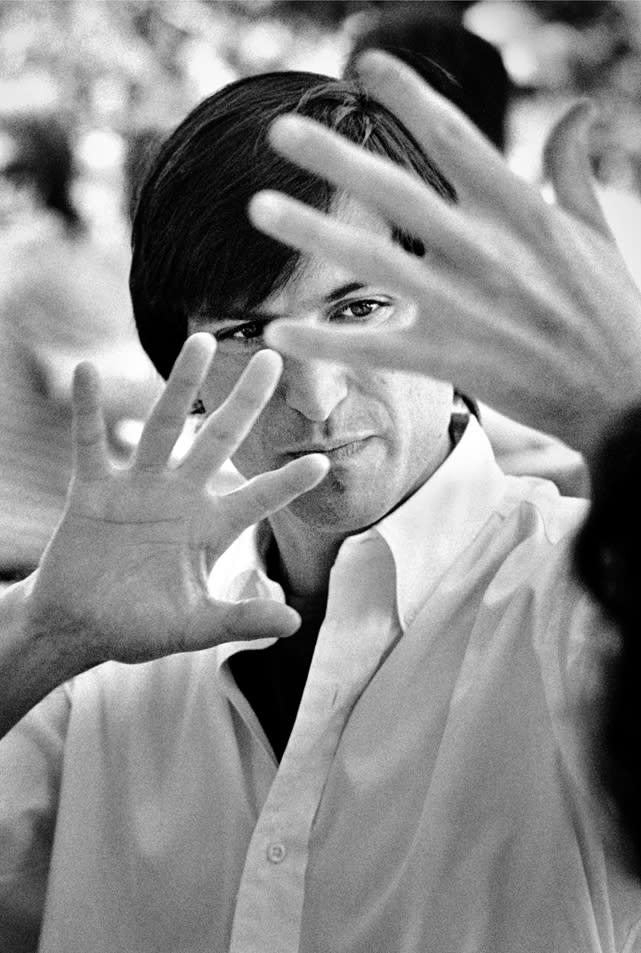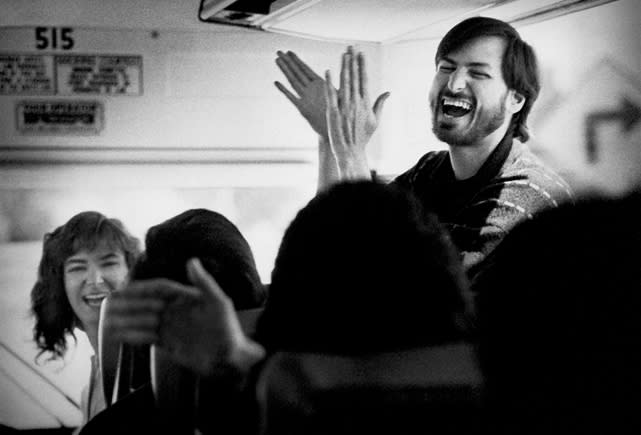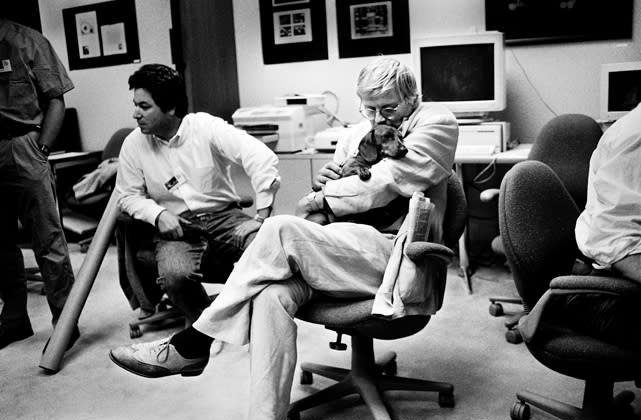Rare photos show NeXT-era Jobs doing his best to change the world

Yesterday we brought you news of a Wired photo gallery with a few great early Steve Jobs photos from Doug Menuez's book Fearless Genius. Today, we bring you some more glimpses into Silicon Valley's golden age that Menuez has decided to share with us, along with his own insights and recollections from the moments the photos were taken. It's a fantastic look back in time and a ride well worth taking.
You can pick up Fearless Genius via Amazon, and keep an eye on his Storehouse page this week as he'll be sharing additional photos from the book online for the very first time.

Steve Jobs Explaining Ten Year Technology Development Cycles. Sonoma, California, 1986.
Steve giving a history lesson about how technology evolves in ten year wave cycles to his new NeXT team at an off-site meeting. Every few months, Steve and the fledgling company's employees would travel to a retreat in the country with their families to grapple with myriad technical issues. There he would regularly hold talks to explain his vision for the company and to encourage his brilliant cofounders and employees to participate fully in its realization. Steve planned to ride the next wave by putting the power of a refrigerator-size mainframe computer into a one foot cube at a price affordable to universities, thus "transforming education." When I asked him what he meant by this, he said he wanted "some kid at Stanford to be able to cure cancer in his dorm room." Because he absolutely believed this was possible, his whole team did. Behind this noble goal, Steve was also on a quest for redemption and revenge after being forced out at Apple in a humiliating boardroom coup after alienating key board members and his handpicked CEO, John Sculley. Most industry pundits believed NeXT would be a huge and rapid success, as did Steve. Instead, it was the start of a decade of difficult, often bitter struggle.

The Day Ross Perot Gave Steve Jobs $20 Million. Fremont, California, 1986.
Steve was a consummate showman who understood the power of a compelling setting. This was never more apparent than at this incongruously formal lunch he hosted for Ross Perot and the NeXT board of directors in the middle of the abandoned warehouse he planned to turn into the NeXT factory. He told Perot that they were building the most advanced robotic assembly line in the world and that "no human hands" would be assembling hardware. He predicted that NeXT would be the last billion dollar a year company in Silicon Valley and that they would ship ten thousand computers a month. Perot, who was then championing a movement to reform education in the United States, was blown away by the presentation and invested $20 million, becoming a key board member and giving NeXT a crucial lifeline.

Steve Jobs Returning from a Visit to the New Factory. Fremont, California, 1987.
Although Steve could be extremely rude, critical, and occasionally even vindictive, he also was incredibly joyful, with an infectious grin and energy that was irresistible. In the early days at NeXT he would often come bounding in, hungry to get to work. Still, there were not too many unrestrained moments of hilarity such as this one, when Steve was riding back from a visit to the newly chosen factory site with the company employees in an old, rented yellow school bus.

Geek Sex. Mountain View, California, 1991.
Real-life boyfriend and girlfriend act out a rudimentary electrical metaphor at an Adobe Halloween party. Technology workers were notoriously socially inept and often shy, especially male engineers. Fantasy games and role playing were popular, and any opportunity to dress in costumes was welcomed. This couple repeated the ritual all over the company to the delight of fellow workers.

The Painter David Hockney Rests during the First Photoshop Invitational. Mountain View, California, 1990.
As digital technology grew more powerful, Silicon Valley became an unexpected crossroads of culture. Artists arrived from all over the world, eager to experiment and hang out at happenings such as the TED conference, creating a freeway and office park version of what Paris in the twenties must have felt like. Producer Quincy Jones and musicians Peter Gabriel and Herbie Hancock were early adopters. Graham Nash was so taken he started his own fine art digital printing business. Tom Wolfe had been out to write about Bob Noyce, the coinventor of the integrated circuit, and lots of writers followed, including Steve Jobs's half sister Mona Simpson. George Lucas was a pioneer in digital film, as was Francis Ford Coppola. The cultural ground was shifting, with the avantgarde gathering to push new digital ideas into the zeitgeist. Here, painter David Hockney, holding one of his beloved dachshunds, attends Russell Brown's first Adobe Photoshop Invitational, where he learned how to use the first release version of Photoshop, happily smoking in the computer room and playing with his dogs on breaks.
Excerpted from the book Fearless Genius: The Digital Revolution in Silicon Valley 1985-2000 by Doug Menuez, Atria Books. Foreword by Elliott Erwitt, Introduction by Kurt Andersen.
All photographs ©Doug Menuez

